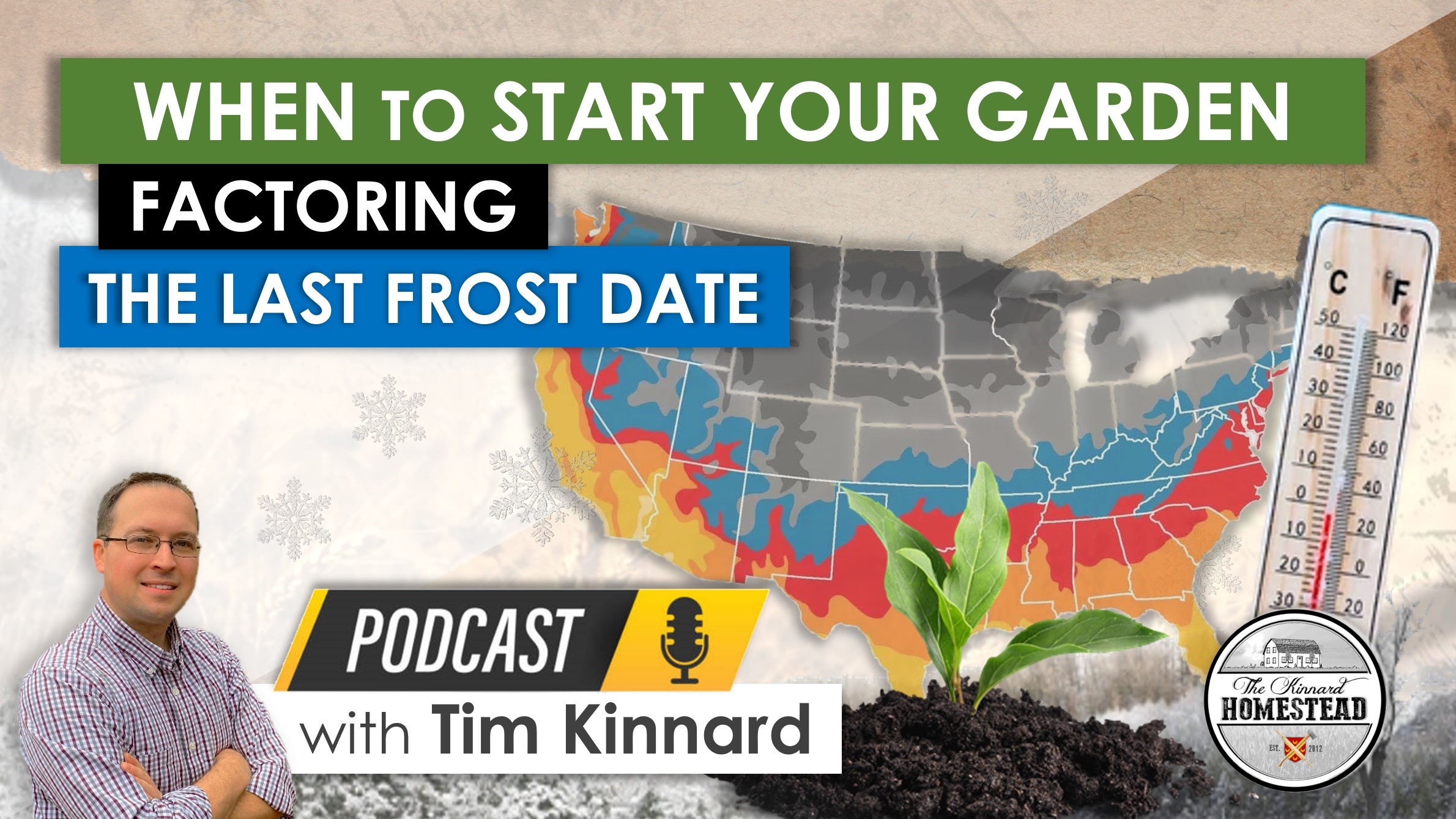When to Start your Garden Factoring the Last Frost Date
“To plant, or not to plant?”
That is the question on a lot of gardener’s minds every spring as temperatures warm up and as their “gardening bug” starts to itch. It’s that time now here in Arkansas as I write this post. Amy and I already have a window full of tomato plant seedlings which we started indoors earlier in the year. They’ve grown to the needed size and are about ready to be moved outside.
When talking about early spring and transplanting your seedlings into the ground, or sowing and planting what you picked up at the plant nursery directly into the ground, an important question to always ask is, “When do you get started?”
The biggest determining factor a gardener must think about when deciding on the right time to start their outdoor garden—assuming we’re talking about a warm-weather garden—is the last frost date.
Of course, there are many hardy, cold-weather plants that actually enjoy the cold that you would want to put in the ground before the last frost date. If we’re talking vegetable gardening, examples of cold-hardy plants would include:
- Beets
- Cabbage
- Carrots
- Lettuce
- Parsnips
- Peas
- Radishes
- Spinach
- Turnips
There are others in addition to those—you can always look up a complete list online. Just keep in mind, though these particular plants enjoy cooler weather, some are less hardy than others and may still need some ground cover protection on really cold days. Many of these plants do well not only in the early spring, but, when cooler temps return after the hot summer months, they do quite well in your fall garden too.
In terms of warm-weather gardening, the kinds of plants you’d want to grow include:
- Beans
- Corn
- Cucumbers
- Okra
- Peppers
- Squash
- Tomatoes
- Zucchini
- And So forth…
Again, you can look up a complete list online. As the name implies, though, warm-weather plants prefer warm weather. Therefore, you don’t want to get started on them while cold weather is still around, especially not cold weather that can drop below 32 degrees Fahrenheit.
When I say “you don’t want to get started on them,” I just mean you don’t want to expose them yet to any cold ground or air temperatures. Other than those plants that do best being sown directly into the ground, you can always start your transplantable seeds indoors. Depending on the germination and maturity times common for a plant—most seed packets will list those timeframes on their labels—you can start your warm-weather plants the appropriate number of weeks before the last frost date indoors. Just place them in a window or under a grow light. Some like to use a heating mat to give them a little extra boost.
Even so, the question still remains, “When do you get started outside?” The answer to that is “After the last frost date.” Of course, that answer raises it’s own question—“When is the last frost date?”
You may have heard a few “old wives’ tales” from one of the old-timers in your family that you’ve learned to rely on. That could be the 6-week countdown after February 2 if the groundhog sees his shadow. That would put winter’s end March 16. Or, there’s the adage, “Thunder in February means frost in May on the same day.” (I’ve heard that one applied to April as well). Or, “Fog in February means frosts in May.” Or, “The threat of frost exists until the first full moon of June”
There’s also the old Czech legend of the “Three Frozen Kings.” According to the story, there were three Czech kings who each went fishing out on the sea. One went out on May 12th and froze when temperatures suddenly dropped. The second King went out the next day on May 13, but he also froze with a sudden drop in temperature. The day after that, on May 14th, the third King went out to fish, and like the two kings before him, he froze too. However, on May 15th, a saint named Zofie came along with a kettle of hot water. He found the three frozen kings adrift, and proceeded to thaw them each out. I suppose the moral of the legend is not to braze the freezing temps before May 15th.
Others like to use easy-to-remember holidays or other familiar dates to go off of, whether that’s Good Friday, Easter, Tax Day, or Memorial Day. You may have your own trusty date you like to use, and you’re certainly welcome to it. Amy and I like to use Tax Day on April 15th as a good window to start planting for us.
The fact of the matter is that the last frost date is never the same every year. The best estimation a person can make will be based on the historical averages for their particular area. For a range of general dates, you can always look up a map of last frost dates based on your “Plant Hardiness Zone” put out by the USDA. According to the map, if you’re in Zones 3 or 4, your last frost date may range anytime throughout the month of May. If you’re in Zones 5 through 7, the range bumps up to April. If you’re Zone 8, it may be late February to late March. If you’re in Zones 9 or 10, you’re good to go as early as January or February.

Just check your location. If you don’t use the USDA Hardiness Zone map, the “National Oceanic and Atmospheric Administration” (“NOAA”) has similar maps you can use.
If you want to narrow your estimation down to a single date on the calendar, you can always look up the historical data for your specific state or zip code. Instead of being given an average date range, you’ll be given a single average date.
Just keep in mind how averages work. Averages are calculated by dividing the sum of both early and late dates. Therefore, there’s a 50% chance your last frost date will occur before or after the average date listed. All that to say, if you’re going to pick a time to plant, you might pick a time a couple weeks after the average last frost date for your area.
Well, hopefully that points you in the right direction to determine when to start your own warm-weather garden. We’re a few days away from getting started on ours.



Leave a Reply